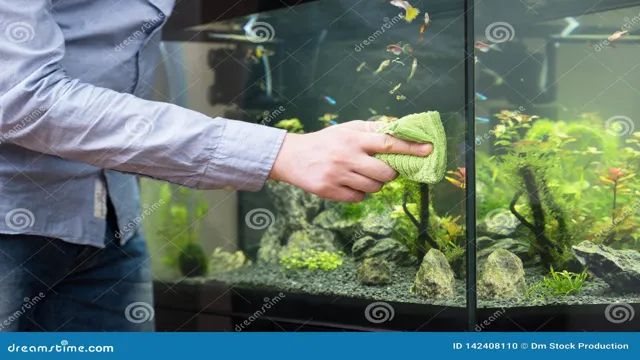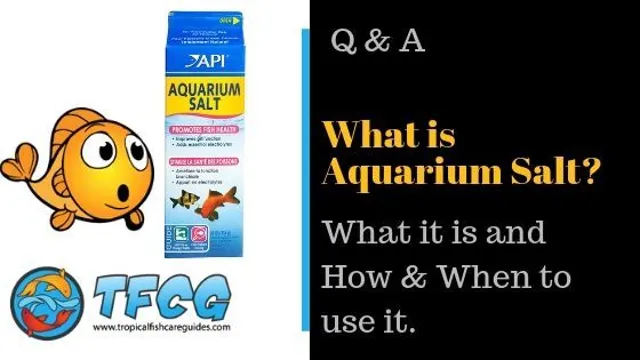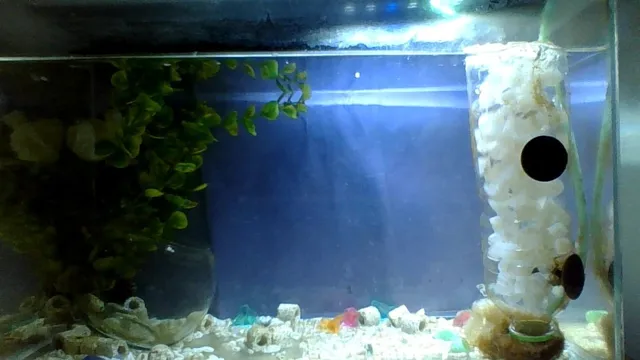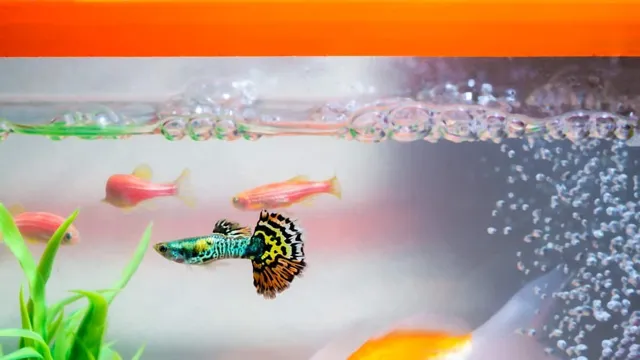Are you tired of dealing with high pH levels in your aquarium? pH levels are a crucial aspect that determines the health of your fish and plants. When the pH rises, it can create an unfavorable living environment for your aquatic pets. Fortunately, there is a solution to this problem – pH Down! pH Down is a water conditioner that helps to lower the pH level in your aquarium.
It’s a must-have for aquarists who want to maintain the optimal pH level for their aquatic life. This wonder product is available in both liquid and powder form, making it easy to use and control the pH levels in your tank. Using pH Down is simple – add the recommended amount to your aquarium before testing the pH level.
Always follow the instructions on the label as adding too much can be harmful to your fish. Additionally, never add pH Down directly to your tank! Instead, add it to the water before pouring it into your aquarium. pH Down works by releasing hydrogen ions, which lowers the alkalinity and reduces the pH level.
It’s essential to note that pH fluctuations in your aquarium can stress your aquatic pets, making them more susceptible to diseases. So, always monitor the pH levels and adjust accordingly. In conclusion, lowering pH levels in your aquarium is critical to maintaining a healthy living environment for your aquatic pets.
And, pH Down is an excellent product to help reduce the pH level in your aquarium. So, if you’re struggling with high pH levels, give pH Down a try – your fish will thank you!
Understanding pH
If you’re looking to lower pH in your aquarium, using a pH down product can be a quick and easy solution. However, it’s important to understand the science behind pH in order to use these products safely and effectively. pH is a measure of how acidic or alkaline a substance is, and for most aquariums, a pH of
0-0 is ideal. If your pH is too high, using a pH down product can lower the acidity level.
However, it’s crucial to follow the instructions carefully and only use the recommended amount, as a sudden drop in pH can be harmful to fish and other aquatic life. Additionally, it’s important to monitor pH levels regularly and adjust as needed using a testing kit. With proper care and attention, you can maintain a healthy pH level in your aquarium.
What is pH and Why is it Important?
pH, acidic, alkaline, hydrogen ions pH is a measure of how acidic or alkaline a substance is and ranges on a scale from 0 to 1 The lower the pH, the more acidic a substance is, and the higher the pH, the more alkaline it is. pH stands for “potential of hydrogen” and refers to the amount of hydrogen ions in a solution.
These ions determine if a solution is acidic or alkaline. pH is important in many aspects of our daily lives, from maintaining the pH balance of our skin and hair to ensuring the water we drink is safe. In addition, pH plays a crucial role in agriculture and the environment, affecting plant growth, soil health, and water quality.
Without pH, many essential chemical reactions would not be possible, making it a vital concept to understand. So, the next time you see something described as acidic or alkaline, you’ll know just what that means.

What is the Ideal pH for an Aquarium?
Aquarium pH Maintaining the appropriate pH level in your aquarium is essential to the overall health and well-being of your aquatic pets. pH is a measure of how acidic or basic the water in your tank is and is measured on a scale from 0 to 1 The ideal pH level for most freshwater aquariums falls within the range of
0 to 0, which is neutral to slightly acidic. Anything below or above this range can lead to stress, disease, and even death for your fish. (See Also: How to Build Your Own Aquarium Filter: A Comprehensive Guide for Beginners)
Keeping your aquarium at the proper pH level can be achieved by regular water testing and adjusting the water chemistry with proper aquarium additives. Remember, a healthy and thriving aquarium starts with the right pH balance.
Using pH Down to Lower pH
If the pH level in your aquarium is too high, you can use pH Down to lower it. pH Down is a chemical solution that contains acidic properties, making it ideal for reducing the alkalinity levels in the water. To use it, add small amounts gradually, testing the water consistently until you get the desired pH level.
It’s best to add pH Down near the filter or aquarium output to ensure the solution is dispersed evenly throughout the tank. However, excessive use of pH Down can be harmful to your aquatic life, so make sure to follow the instructions correctly and regularly test the pH levels to maintain the perfect balance for your fish.
What is pH Down?
pH Down pH Down is a chemical solution used to lower the pH levels in aquariums, swimming pools, and hydroponic systems. It is a necessary product for those who want to maintain a balanced pH level in their water system. pH Down solutions contain a strong acid to reduce the pH level to a more acceptable range.
Lowering the pH level can be challenging, and it is essential to follow the manufacturer’s instructions and use it with great caution. The chemical solution must be added gradually to avoid sudden or drastic changes in pH level, which can harm aquatic life. pH Down should be used only when necessary and sparingly.
Regular monitoring of the pH level is also recommended to maintain a healthy aquatic environment. pH Down is not a toy and should be kept out of reach of children and pets.
How to Use pH Down Safely and Effectively?
Using pH Down to Lower pH can be a useful tool for adjusting the acidity or alkalinity of your hydroponic system or aquarium. However, it’s important to follow safety guidelines to avoid harming your plants or fish. Before adding pH Down, test the pH level to determine the proper amount to add.
Start with small amounts and gradually increase until the desired pH is reached. It’s also important to thoroughly mix the pH Down solution with the water to ensure even distribution. When working with pH Down, wear gloves and protective eyewear as it can cause skin and eye irritation.
Additionally, keep the pH Down solution away from children and pets. Overall, pH Down can be a valuable tool for maintaining a healthy environment for your plants and fish, but safety should always be the top priority.
Alternative Methods for Lowering pH
When it comes to lowering the pH in your aquarium, there are alternative methods to consider aside from using pH down solutions. One option is to incorporate natural materials like driftwood, peat moss, or almond leaves into the tank. These materials can help create a tannin concentration that will naturally lower the pH levels.
Another method is to add CO2 to the tank, which will also lower the pH levels. However, it’s important to do this carefully to avoid creating an unstable environment for your aquatic creatures. Lastly, performing regular water changes can also contribute to maintaining a balanced pH level.
Whether you choose to use pH down solutions or opt for alternative methods, it’s essential to monitor pH levels regularly to ensure a healthy and thriving aquarium for your aquatic pets. (See Also: How to Get from Namba to Osaka Aquarium: A Comprehensive Guide)
Using Carbon Dioxide Injection
Carbon dioxide injection is an innovative approach used to lower pH levels in agricultural land and water. This process involves introducing carbon dioxide into the soil or water, which reacts with water to form carbonic acid, thus reducing the pH levels. Carbon dioxide injection is ideal for reducing soil alkalinity, which can improve nutrient uptake by plants and enhance the effectiveness of fertilizers.
Moreover, it can address pH imbalances in water resources and enhance water quality. This method is a more sustainable alternative to chemical methods of pH alteration, which can have negative impacts on the environment and human health. With carbon dioxide injection, farmers and landowners can enjoy improved crop yields and healthier water resources while minimizing their carbon footprint.
Using Peat Moss or Driftwood
When it comes to lowering the pH level of your aquarium, there are a few different methods you can try. One alternative option is using peat moss or driftwood. Peat moss is a natural product that is high in tannins, which can help lower the pH of your aquarium water.
It’s important to soak the peat moss in a separate container before adding it to your tank, as this will help prevent any potential problems with water quality. Driftwood is another option that can help lower the pH level of your aquarium. Like peat moss, driftwood releases tannins into the water, which can help lower the pH naturally.
It’s important to note that both peat moss and driftwood can also have an impact on the color of your water, which may be unwanted in some cases. Overall, using peat moss or driftwood can be a great way to lower your aquarium’s pH without relying on chemical additives.
Maintaining Stable pH Levels
Maintaining stable pH levels is crucial for the health and well-being of your aquarium inhabitants. A high pH can cause stress and even death to your fish, while a low pH can lead to increased ammonia levels. If you’re noticing a high pH and want to lower it, using a pH down product can be effective.
Look for products that are safe for use in your aquarium and carefully follow the instructions on the label. It’s important to test your water regularly to monitor pH levels and adjust accordingly. Add the pH adjuster slowly and in small increments to avoid sudden pH changes that can cause shock to your fish.
Keep in mind that pH levels can fluctuate based on water changes, feeding, and other factors, so regularly monitoring and adjusting your pH levels is key to maintaining a healthy aquarium.
Testing pH Levels Regularly
Maintaining stable pH levels in your water is vital for the health of aquatic life. A change in pH can cause stress and even death in fish and plants. So, regularly monitoring pH levels in your aquarium or pond is crucial.
You can use test kits to check the water’s pH level, which can be influenced by factors like water hardness, the type of substrate, and the presence of decaying organic matter. If your pH level is too high or low, there are ways to adjust it, such as using pH buffers or water changes. Think of pH levels like a seesaw – you want them to stay balanced to keep your aquatic inhabitants happy and healthy.
So, make it a routine to test your pH levels and make any necessary adjustments to maintain a stable and healthy aquatic environment.
Avoiding Major pH Swings
Maintaining stable pH levels is crucial for the health and well-being of fish and other aquatic organisms. Drastic pH swings can have detrimental effects on their immune system, reproductive and growth rates, and even lead to death. To avoid such occurrences, it is essential to monitor pH levels frequently and take steps to maintain stability. (See Also: How to Make a Rock Background for an Aquarium: Step-by-Step Guide)
One effective way to do this is through regular water changes, as this dilutes any harmful excesses of natural acids and alkaline levels. Utilizing buffering agents can also help to maintain pH stability, as they help to neutralize any fluctuations in pH levels. By taking such measures and keeping a close eye on pH levels, fish enthusiasts can enjoy healthier and happier aquatic life.
Conclusion and Final Thoughts
In conclusion, lowering the pH in your aquarium can seem like a daunting task, but with the help of a pH down product and careful monitoring, it can be achieved with ease. Just remember, a healthy and balanced aquarium environment will not only benefit your fish and plants, but it will also provide endless entertainment and joy for you as well. So go forth and keep your aquarium happy and pH balanced, because as we all know, a happy tank equals a happy life!”
FAQs
What is the ideal pH level for an aquarium?
The ideal pH level for an aquarium can vary depending on the type of fish and plants in the tank, but for most freshwater aquariums, a pH level between 6.5 to 7.5 is recommended.
What causes high pH levels in aquariums?
High pH levels in aquariums can be caused by factors such as alkaline tap water, excess use of limestone or coral as substrate, and low levels of carbon dioxide in the water.
How do I test the pH level in my aquarium?
You can test the pH level in your aquarium using a pH testing kit or pH meter. Simply follow the instructions provided with the kit or meter to obtain an accurate reading.
How does pH down work to lower the pH level in an aquarium?
pH down is usually composed of either hydrochloric acid or phosphoric acid, which work to neutralize the alkaline substances in the water and lower the pH level.
Can I use vinegar to lower the pH level in my aquarium?
Vinegar should not be used to lower the pH level in an aquarium, as it can introduce harmful substances and disrupt the balance of the water chemistry.
Are there any risks associated with using pH down in an aquarium?
pH down should be used with caution, as it can lower the pH level too quickly and cause stress or harm to the fish in the tank. It is important to carefully follow the instructions and use the product in moderation.
How often should I test the pH level in my aquarium?
It is recommended to test the pH level in your aquarium at least once a week, or more frequently if you notice any fluctuations or changes in the behavior of your fish.







